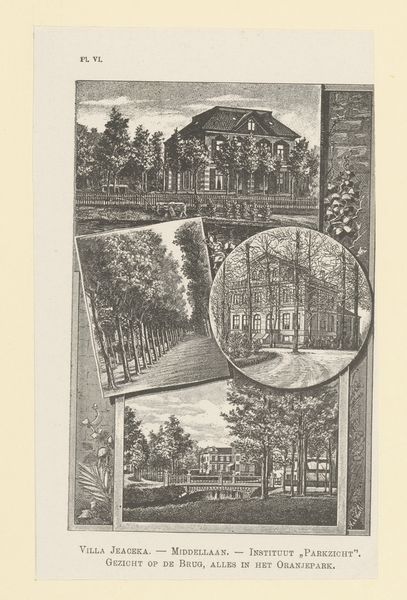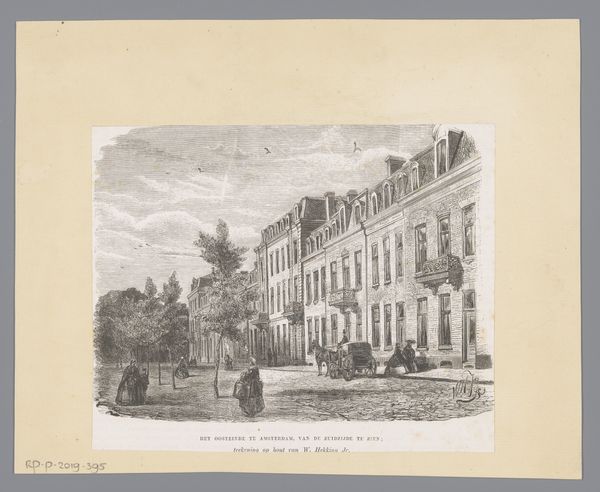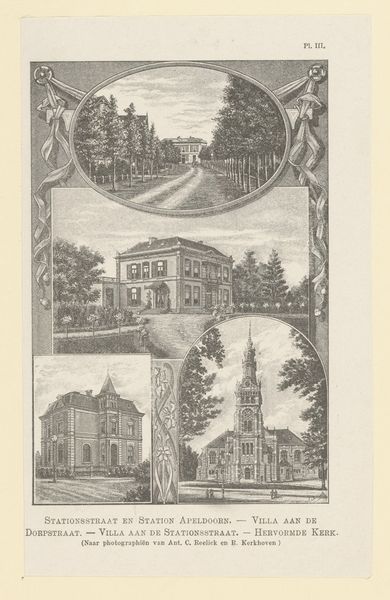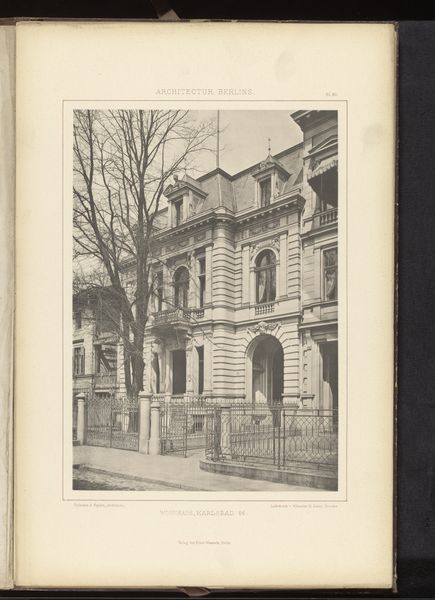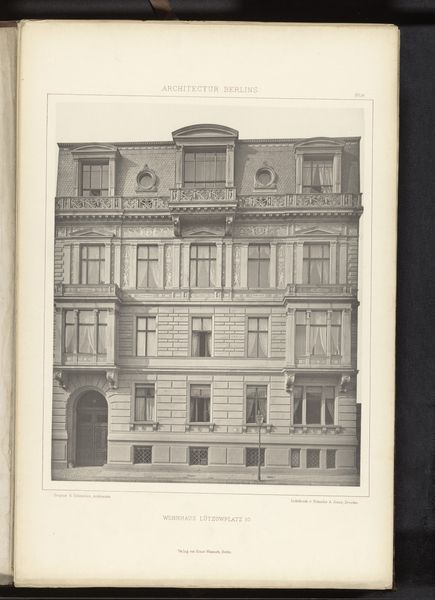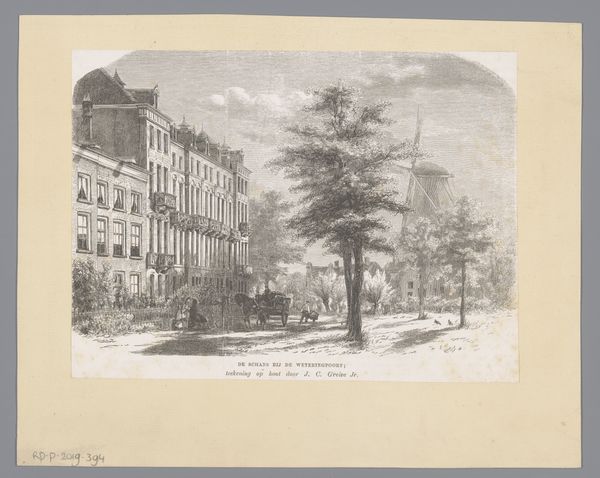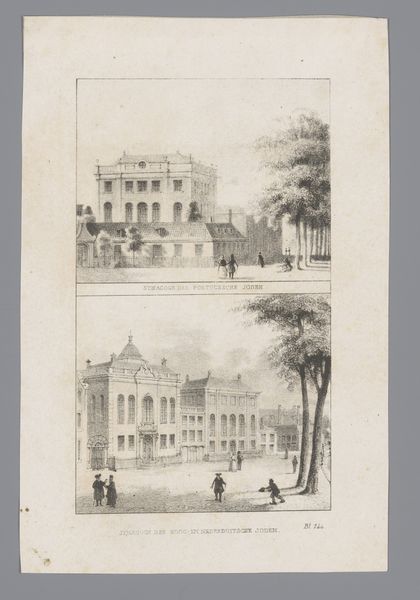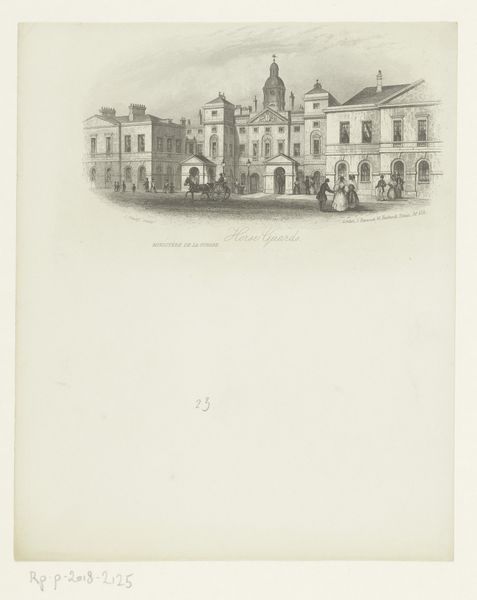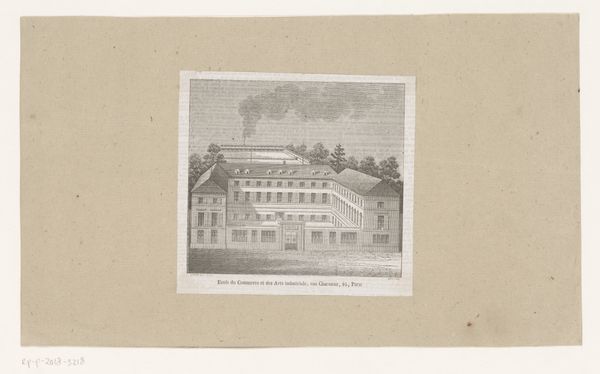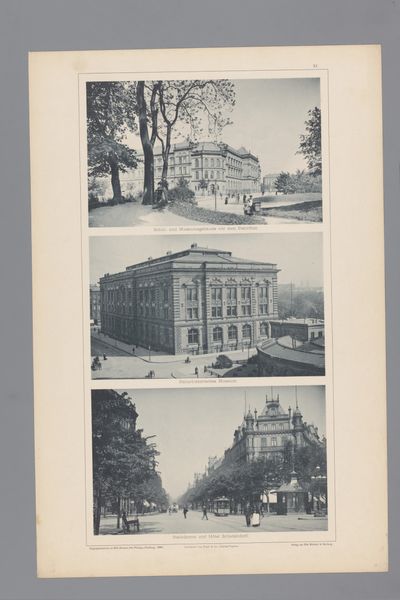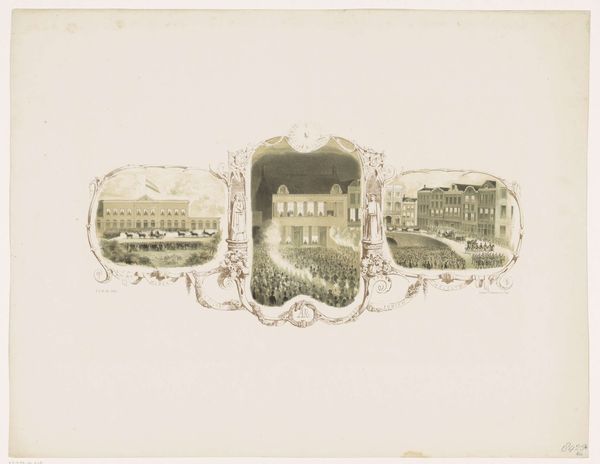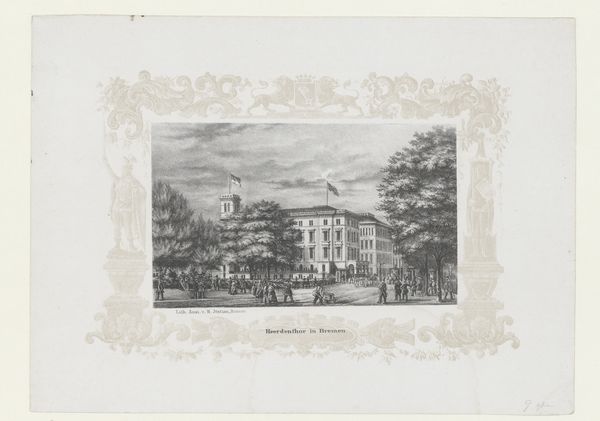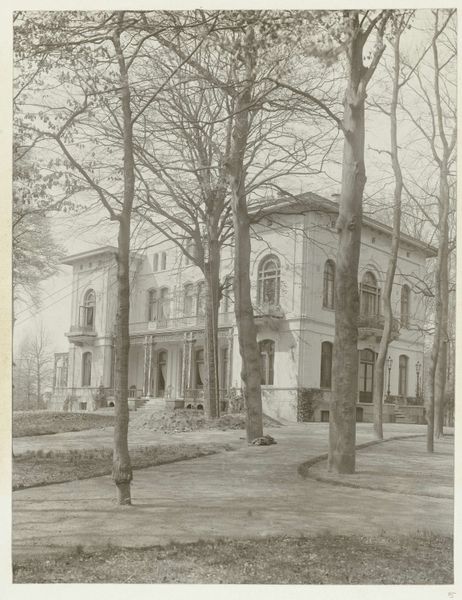
print, engraving, architecture
#
picture layout
#
aged paper
#
dutch-golden-age
# print
#
landscape
#
historical photography
#
cityscape
#
engraving
#
architecture
#
realism
Dimensions: height 182 mm, width 114 mm
Copyright: Rijks Museum: Open Domain
Curator: This print, dating roughly from 1890 to 1900, showcases the Loolaan and the school of King Willem III and Queen Emma. It’s an engraving after photographs by Ant. C Reelick and E.A. Kerkmejer. Editor: It gives me a strong sense of established power, of ordered spaces, a hierarchy literally built into the landscape through these stately buildings. Curator: Absolutely. Think about the means of its production—engraving as a relatively accessible method, making this depiction of royal spaces available to a broader public. It speaks volumes about how images of power circulated at the time. We're seeing royalty presented within an ideology of visibility, consumption, and distribution. Editor: Right, and it makes me consider the power dynamics involved in constructing such a narrative. Who has access to this 'broader public'? And how does the romanticized depiction of these royal villas affect perceptions of wealth and class? There’s a palpable visual contrast between the lives lived within those walls, and those looking in through this print. Curator: That’s a pertinent observation. The engraving technique lends itself to precise, reproducible images –almost factory-like. Consider the labor involved in replicating and distributing this image. This labor force likely was outside the class presented. The print then becomes a material object imbued with complex social meanings. Editor: And that intersects with ideas around national identity, too. How is the monarchy being presented and consumed by citizens? It encourages discussion of visibility, representation, and the gaze. The photograph serves as documentation but is then filtered through engraving, reshaping perceptions. It asks: what's the impact of mass-producing idyllic royal scenes? Curator: I see that as both aspirational and reflective of societal hierarchy at the time. It also underscores the transition from handmade artisanal methods toward mass production. It opens pathways to understand broader production networks from paper manufacturers to engraving artists. Editor: It definitely makes me think critically about the values embedded within the artwork itself. It goes beyond architectural representation and starts probing broader concepts about visuality, privilege, and social equity. Curator: Precisely. Thinking materially, it connects us to the past and offers unique angles for understanding visual production. Editor: For me, it’s about understanding how this image actively shapes narratives of power and inequality within its specific time.
Comments
No comments
Be the first to comment and join the conversation on the ultimate creative platform.
